How to Prune Low-Hanging Fruit Tree Branches: The Easy Way
 Lee Burkhill: Award Winning Designer & BBC 1's Garden Rescue Presenters Official Blog
Lee Burkhill: Award Winning Designer & BBC 1's Garden Rescue Presenters Official Blog

As small garden trees and fruit trees start to grow each year the chances of lower branches becoming too heavy to support the fruit is a real issue. If you leave these lower branches to continue to grow and bear fruit the likelihood is they will start to droop to the flower and could tear themselves off in the autumn weight of fruit.
Let me show you how to quickly prune back low-hanging branches with some everyday tools. Ensuring that your garden fruit trees stay super healthy and produce lots of delicious grow-your-own fruit each year!
As fruit trees grow and mature, you will often find that the lower branches below can become congested with fruit, which weighs them down or too heavy to sustain themselves due to excessive side growth. This is usually because of laterals or side shoots that add to the weight of these lower branches.
As they are the first branches to form on younger fruit trees they can often end up too thick and heavy to mow around or keep off the ground.
By pruning off these low-hanging branches, you help keep the tree productive and allow the fresh top growth to utilise all of the tree's energy rather than low branches, which can get damaged.
Pruning low-hanging branches couldn't be easier with a few simple common tools.
Use these for thin branches no thicker than a pencil's diameter and side shoots. You can read how to keep secateurs sharp here if your snips are a bit rusty or blunt!
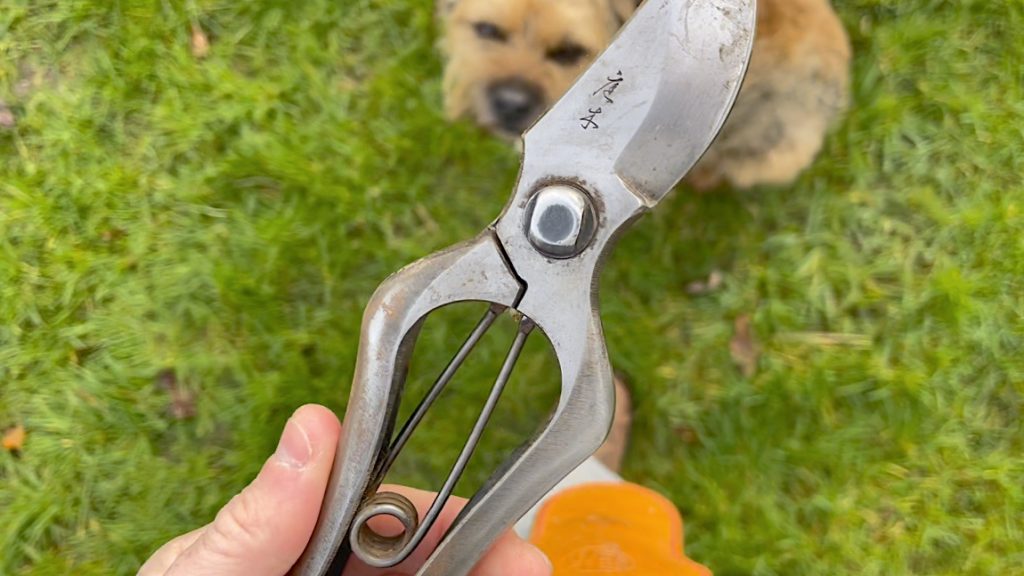
This bit of gardening kit is essential for all sorts of tree pruning. It can handle far thicker branches than secateurs and does light work when pruning trees. I use a Japanese folding saw that cuts on the reverse, but any folding tree saw will do.
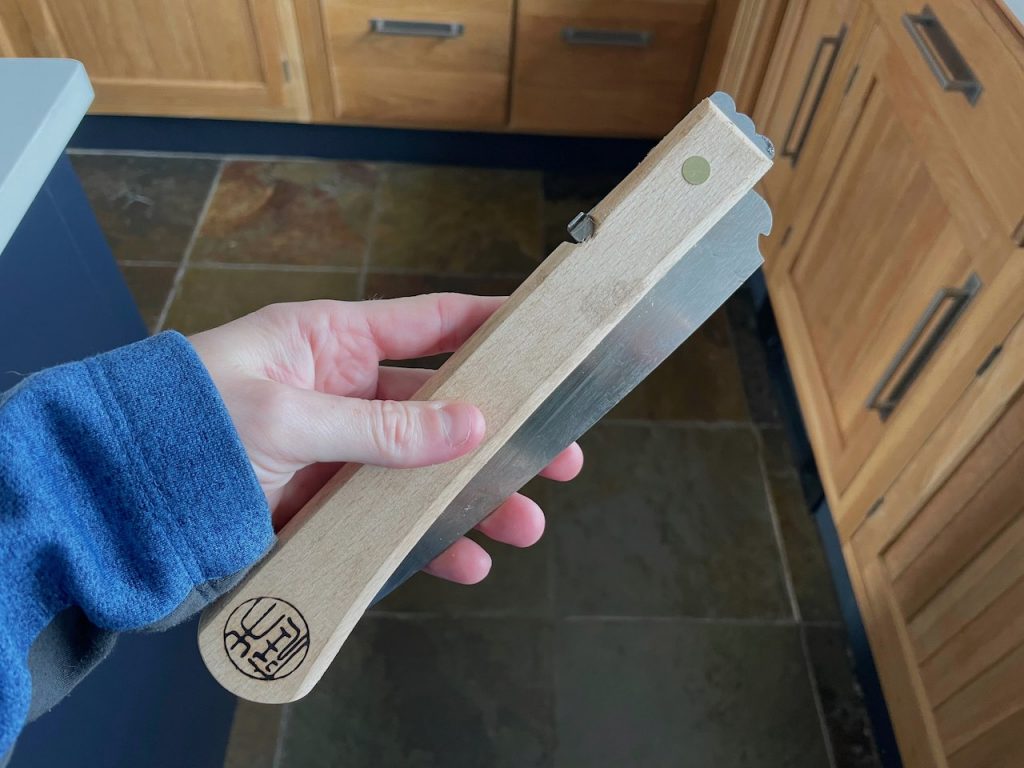
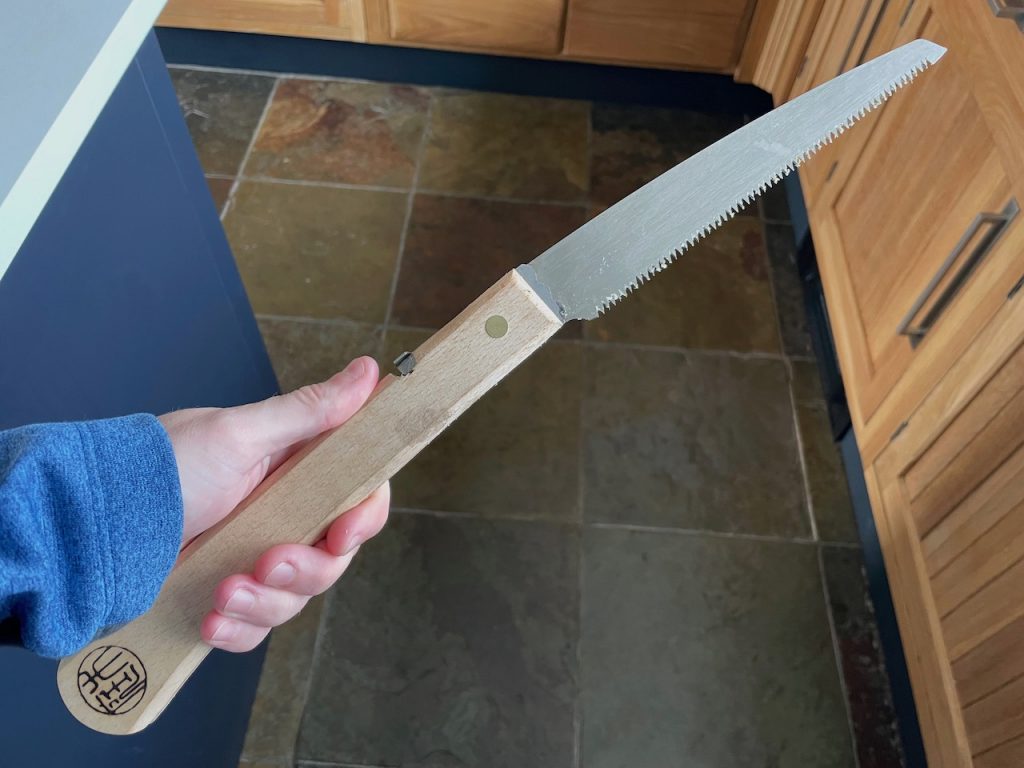
Folding pruning saws are light weight and a great tool for quickly cutting back branches. Whilst you can use any common clean hand saw these are easier to maneuver and provide an easier gardening experience.
Always make sure you were the necessary personal protective equipment such as gloves, goggles, and whatnot depending on what you're pruning. Also, make sure that you reuse or compost your pruning. Fruit tree prunings when dried make excellent kindling for log burners or open fires!
Once you've got the right equipment, such as a pruning saw and gloves, it's time to work out which branches need to go. Standing back for a few minutes and planning is always better than just jumping in, hacking, and cutting back without a plan.
Any branches that you do take off either need to be cut right back to the main trunk or to a suitable side shoot or lateral. Avoid leaving too much leftover branch material, such as stumps of a branch, which can end up being dangerous when you catch yourself on them.
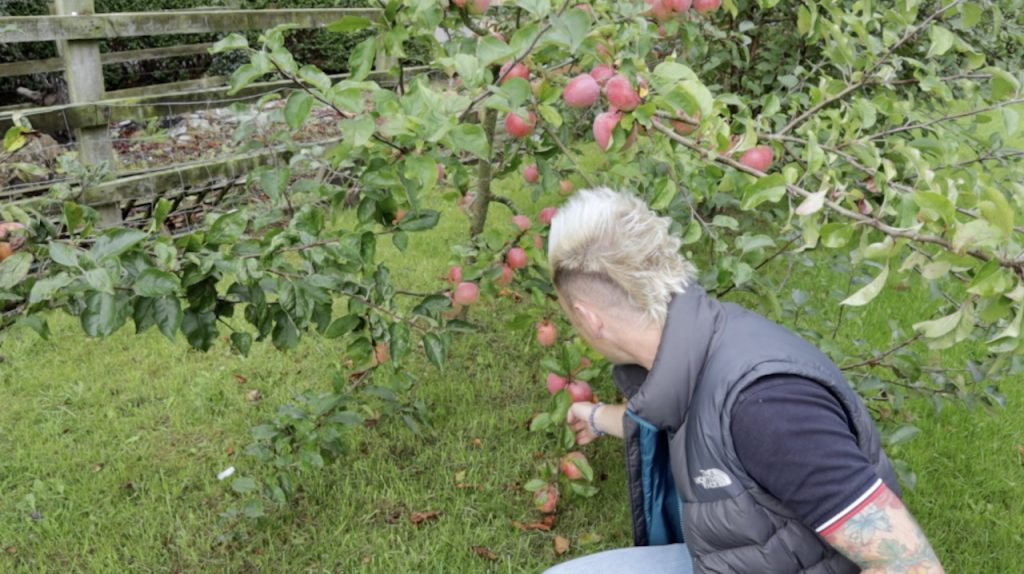
This is usually all the way back to the main trunk to remove the lower branch entirely. In the image above, the low-hanging branch is easily identifiable as it's scraping the ground. It needs cutting all the way back to the main trunk.
Did you know that you can take my course and learn how to become a Garden Ninja yourself? Click here for details
This is where most beginner and even professional gardeners get pruning cuts wrong. With all branches thicker than a pencil, make the first half (50%) of the cut underneath the branch.
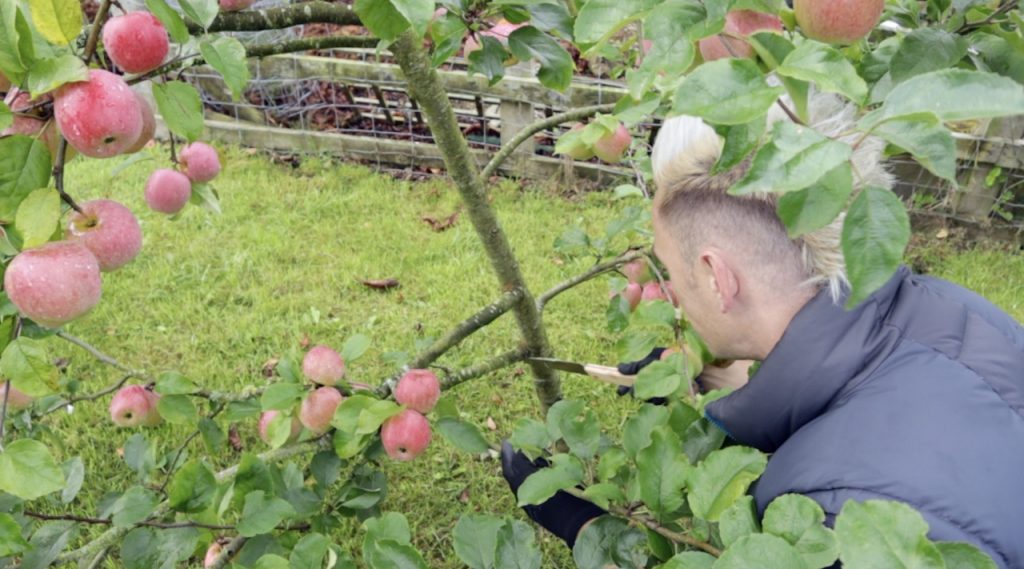
This takes the weight off the branch, so the cut doesn't tear and damage the tree. Cutting directly from the top down means that eventually, the weight of the branch will pull it away from the tree. Cutting halfway from the underside first prevents this, making the cut easier and cleaner.
Now that 50% of the cut has been made underneath flip the pruning saw to cut down from the top side. Aiming to meet the cuts 50% of the way through the branch. Creating a clean cut.
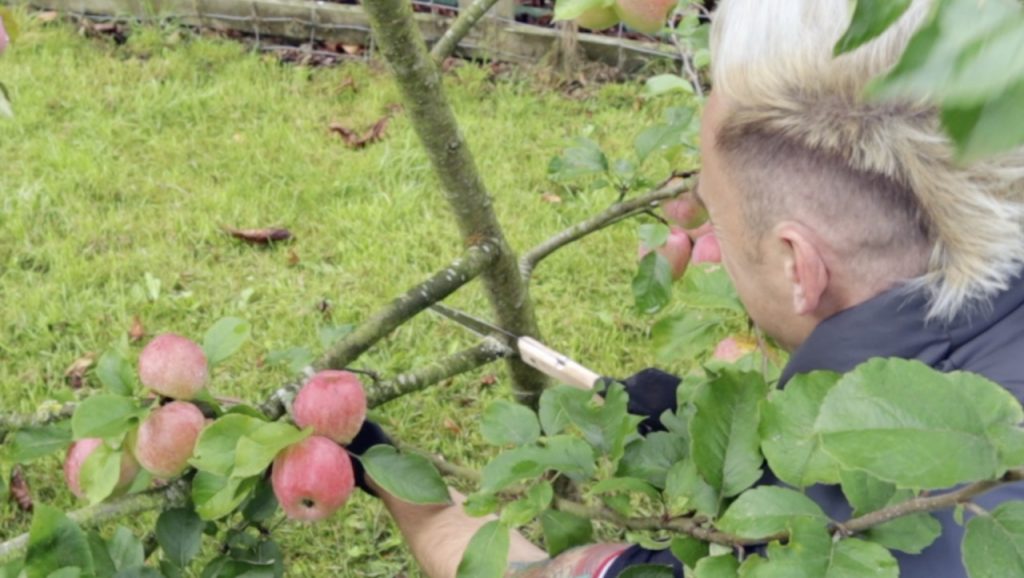
Take your time and hold the weight of the branch in your other hand as the cut nears completion. Slowing down allows you to make a neat rather than jagged cut.
A clean heat cut should be just away from the main trunk and at a slight downward angle to allow water to run off. The image below shows a perfect, neat pruning cut for branch removal.
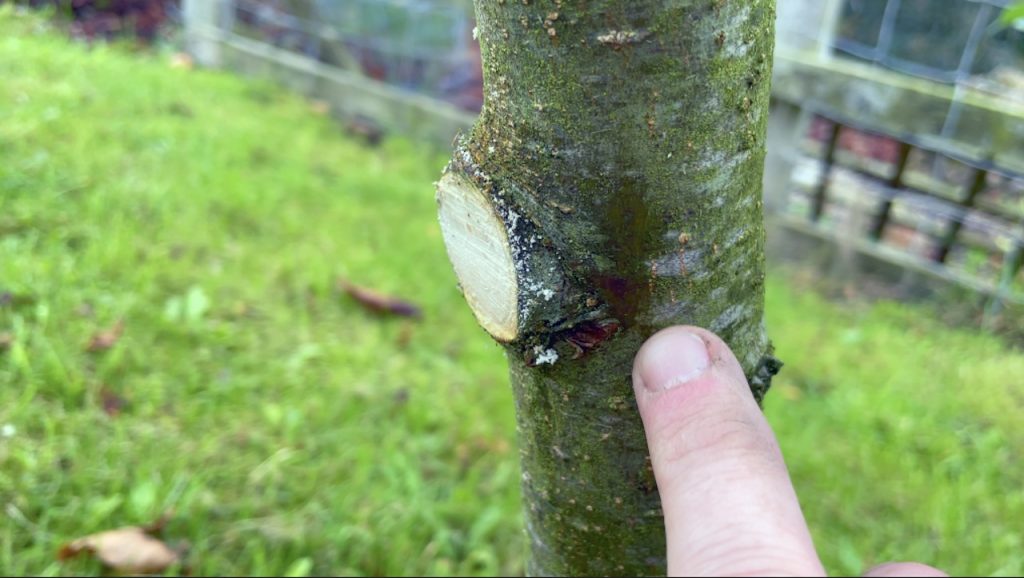
Once you've removed the low branches that are scraping the ground, you can also tidy up any downward-facing laterals on other branches. Have a look at other stems/laterals from the branches immediately above those you have removed.
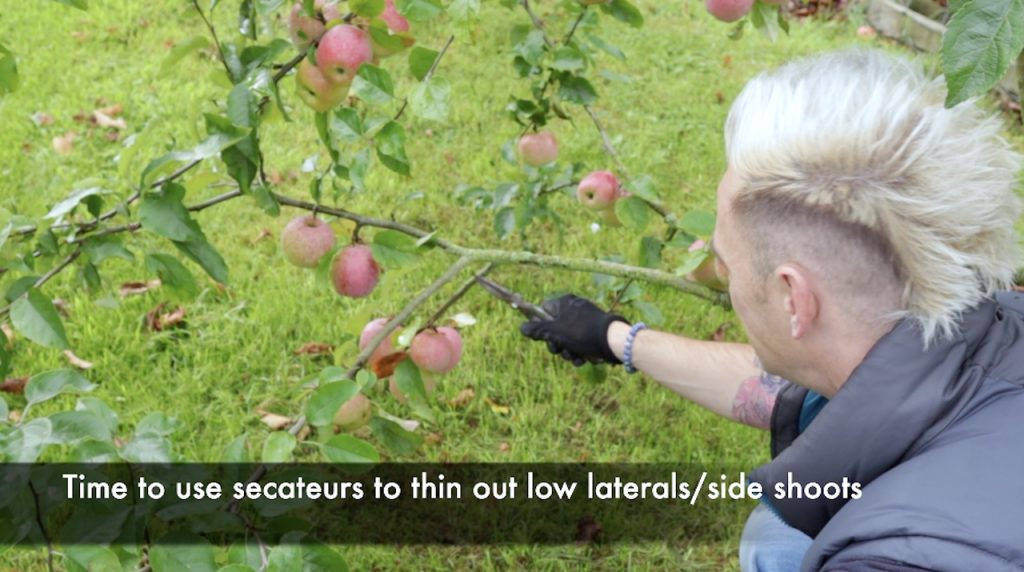
If facing down, the chances are these are going to suffer a similar fate, so I prefer to remove these. Allowing the fruit tree to focus on outward and upward growth is easier to manage. Take these back to the next main branch with clean, neat cuts.
Once finished, your lowest branches should look like the apple tree example below. See how I've cut the longest tips off to stop it from becoming too long and then cut back any downward-facing shoots. This focuses the energy of the fruit tree to fruit on this 'controlled' branch, stopping it from becoming overladen with fruit next year. The two apples are a good reference point for the before and after of this type of pruning.
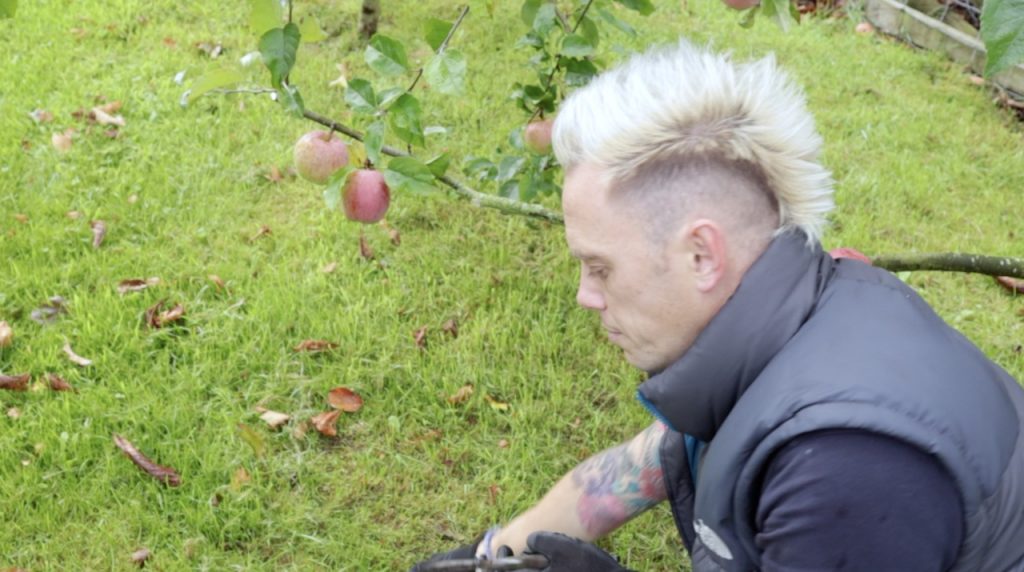
There are two main rules when it comes to pruning trees and it depends on whether the trees are evergreen or deciduous. Then as with all gardening, there are a few exceptions.
Prune evergreen trees in spring when they are actively growing. Avoid pruning in winter as they can bleed which can impact their health and recovery.
Deciduous trees should always be pruned in winter when they are dormant.
With fruit trees, the rules do change slightly depending on the type of pruning you're undertaking or what the outcome is.
If you prune in summer, you're pruning to restrict growth. This cuts off energy from that branch, limiting it.
If you prune in winter, you are encouraging spring growth. This focuses energy below the pruning cut.
The exception is the prunus or plum species. As they quickly can be infected by Silverleaf disease in the winter it's best to prune these early spring before they blossom.
Pruned branches need not be resigned to the bin. There are a number of recycling options for all tree pruning:
Pruning low-hanging branches is relatively simple and is a great way to keep your trees in a healthy shape. Pruning also helps increase your knowledge of how plants grow in the garden and makes us better gardeners. Please don't fear pruning but use it as a method of improving your garden and helping Mother Nature out.
If you have any questions please drop a comment below or add one to my Youtube channel where I’m happy to help. You can also check out my Tweet, Facebook or Instagram for more guides and tips.
Happy Gardening!



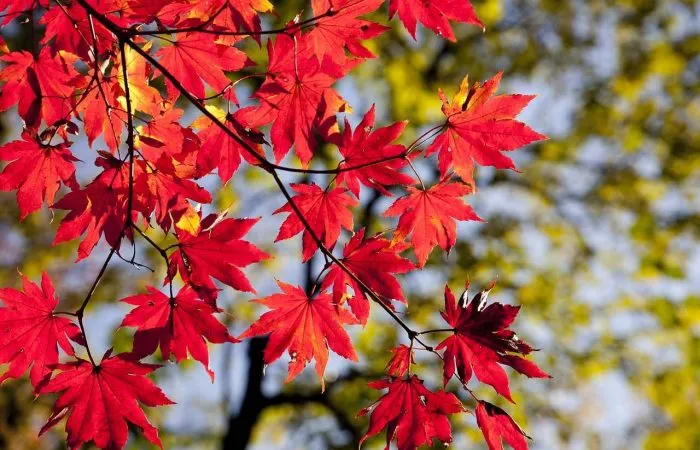
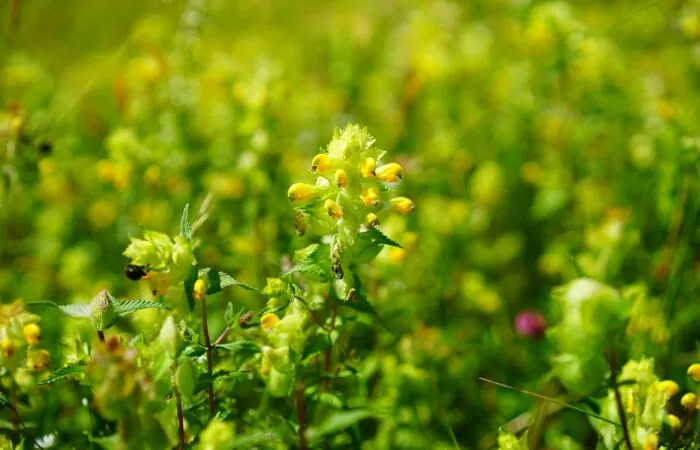
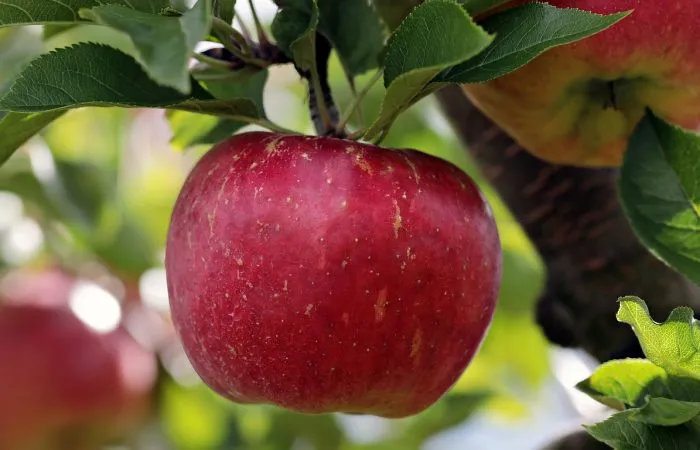
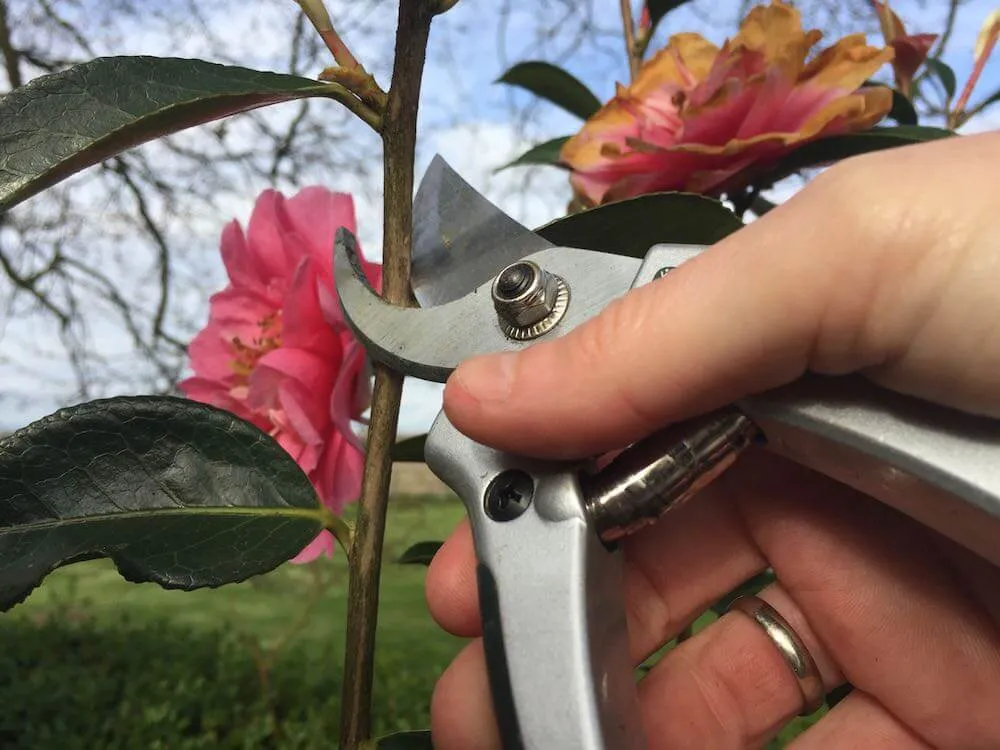

JOIN THE NINJAS

Be the first in line for new Guides, Discount codes and Offers